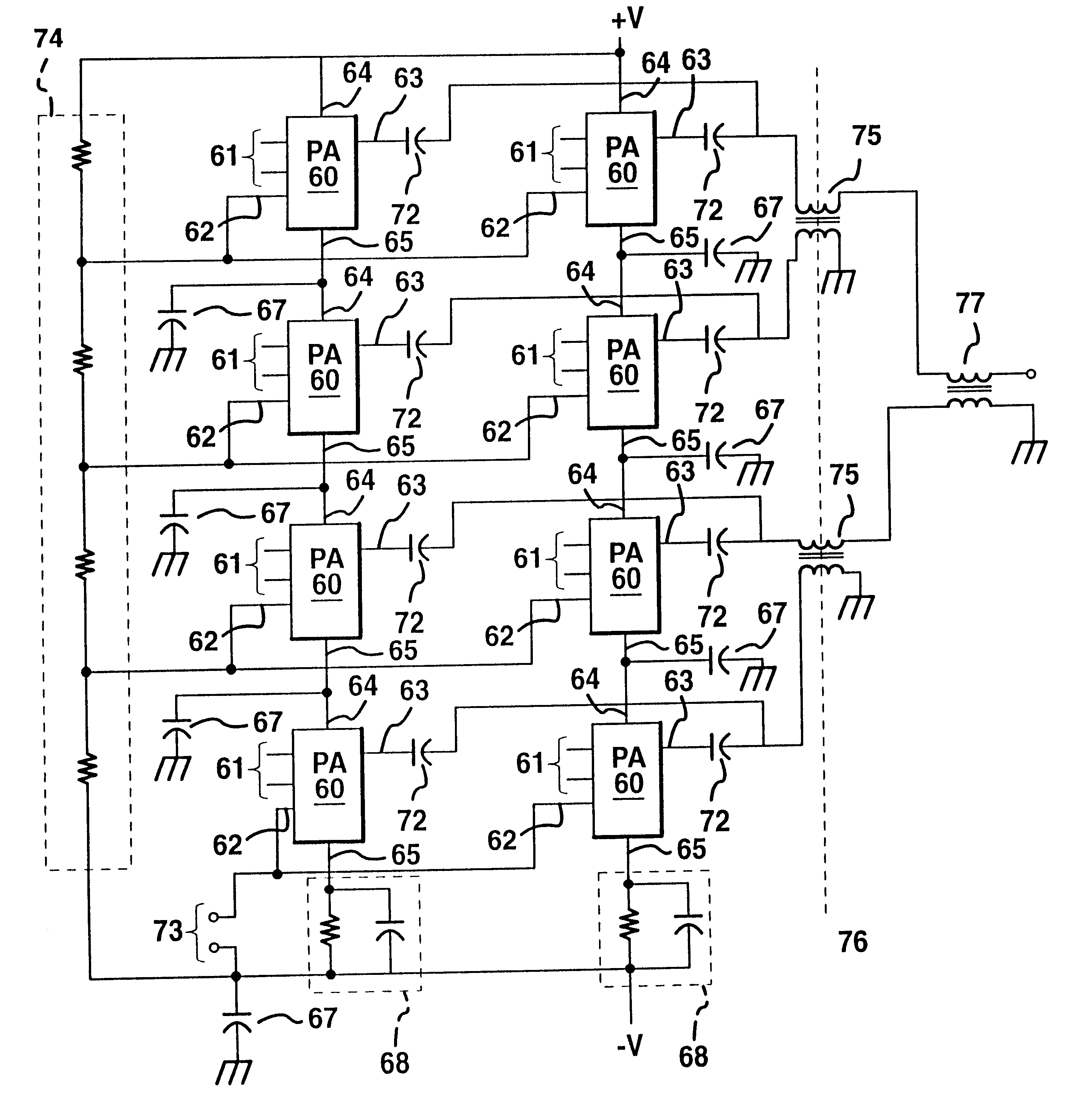System for high power RF plasma processing
a plasma processing and high-power technology, applied in plasma techniques, transportation and packaging, gated amplifiers, etc., can solve the problems of limiting the maximum bus voltage, reducing the range of application of radio frequency generators, and increasing the cost of pa power supply over the long term, so as to reduce the number and complexity of power components, and enhance the scope of application of such generators. , the effect of small and light weigh
- Summary
- Abstract
- Description
- Claims
- Application Information
AI Technical Summary
Benefits of technology
Problems solved by technology
Method used
Image
Examples
Embodiment Construction
As mentioned above, the present invention presents improved circuits and circuit configurations for production of radio frequency high power signals. This may be most easily seen by comparison to the prior art. In the prior art, the incoming mains power supply is reduced in voltage to be compatible with the lower voltage capability of the power amplifying devices. As has been said, this can be accomplished in several ways, two of which are shown in FIG. 1.
FIG. 1a shows a common basic configuration of the prior art. Power from the incoming supply 1 (such as the mains supply) is transformed by transformer 2 to a lower alternating voltage 3. This lower voltage 3 is converted to dc bus voltage 5 by AC-DC converter 4. This bus voltage 5 is supplied to a plurality of power amplifiers (PAs) 7, by parallel connection. That is, each of the plurality of PA units 7 is supplied the same bus voltage 5. Naturally, there may be in some cases only a single PA unit, but if higher powers are required...
PUM
 Login to View More
Login to View More Abstract
Description
Claims
Application Information
 Login to View More
Login to View More - R&D
- Intellectual Property
- Life Sciences
- Materials
- Tech Scout
- Unparalleled Data Quality
- Higher Quality Content
- 60% Fewer Hallucinations
Browse by: Latest US Patents, China's latest patents, Technical Efficacy Thesaurus, Application Domain, Technology Topic, Popular Technical Reports.
© 2025 PatSnap. All rights reserved.Legal|Privacy policy|Modern Slavery Act Transparency Statement|Sitemap|About US| Contact US: help@patsnap.com



